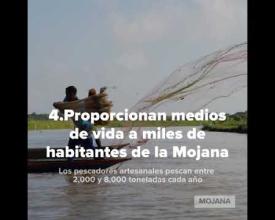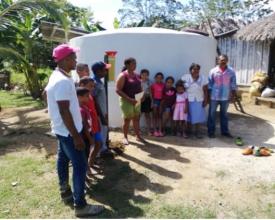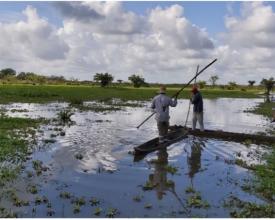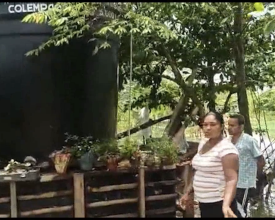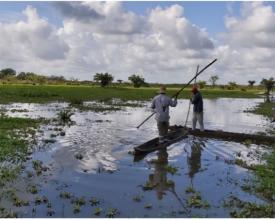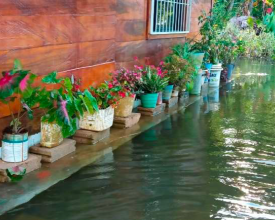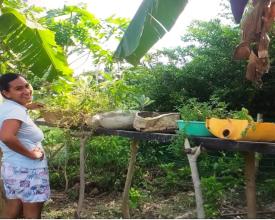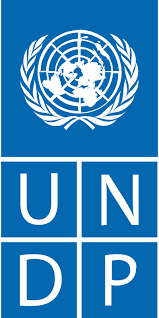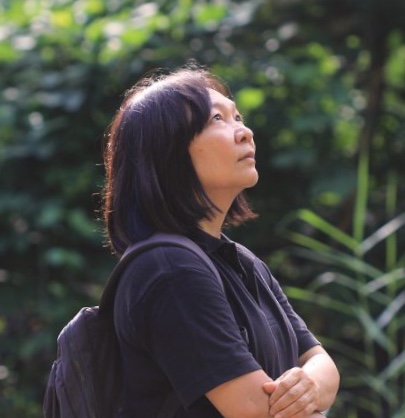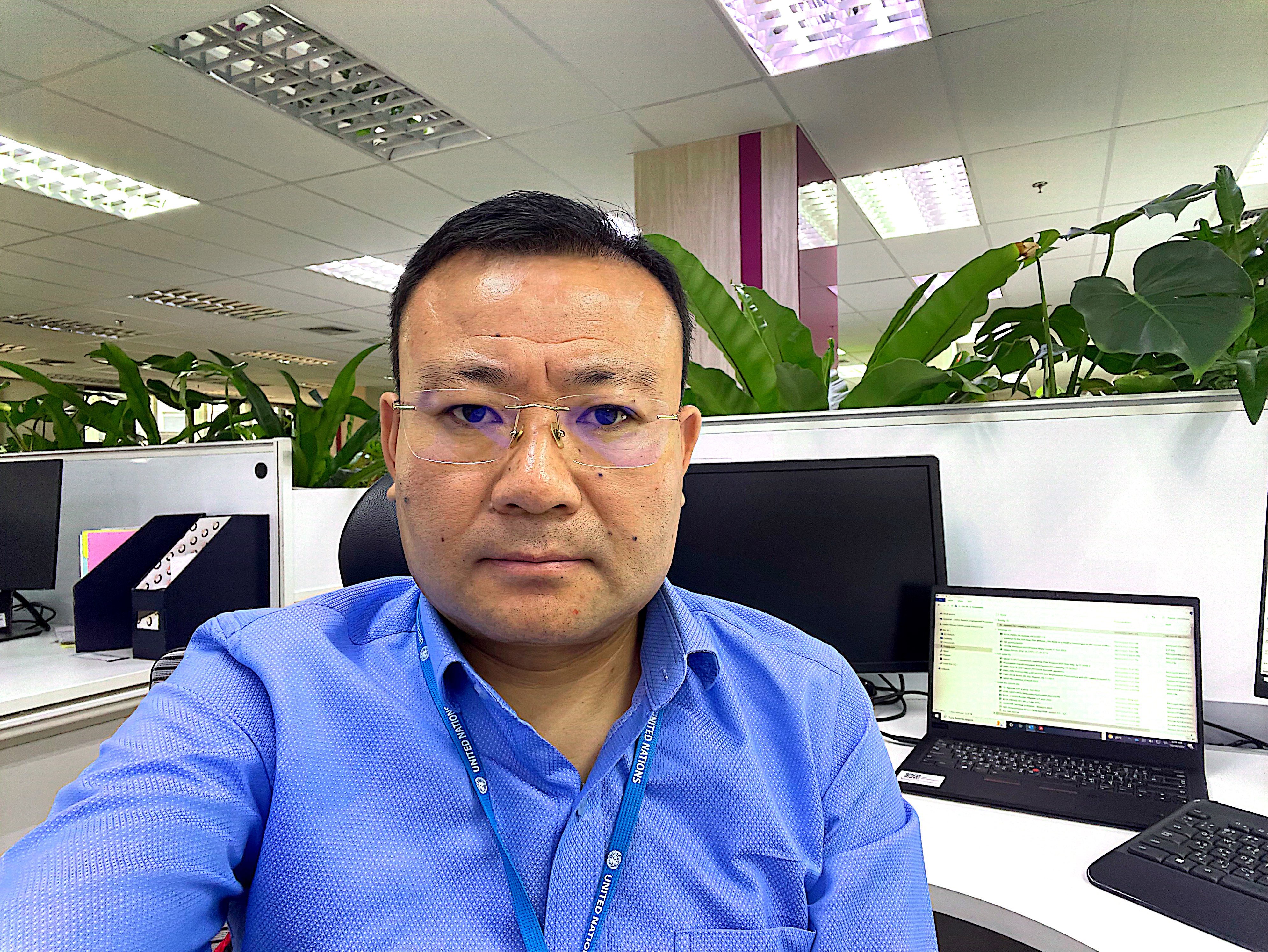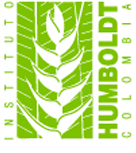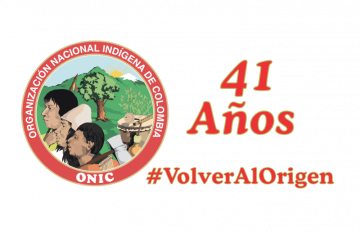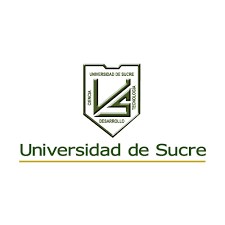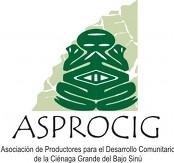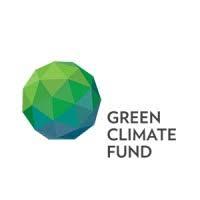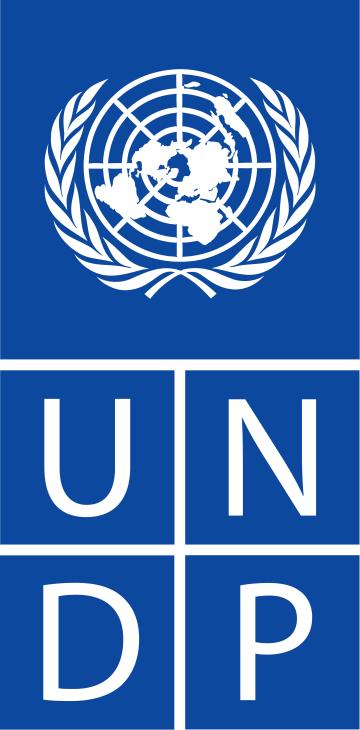
Scaling up climate resilient water management practices for vulnerable communities in La Mojana, Colombia
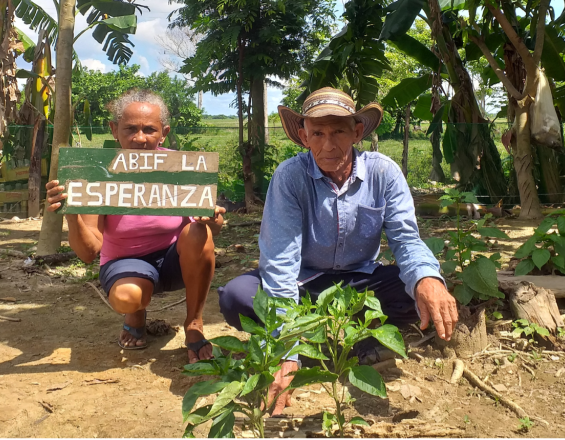
Intense flooding and prolonged dry seasons due to shifts in precipitation patterns have caused significant impacts to the population in the La Mojana region with climate projections expecting these to become more frequent and intense. Impacts include loss of crops, changes to ecosystems and their capacity to provide water management services and adverse impacts from longer dry periods. These impacts provide additional pressures to overstressed water sources, affecting both supply and quality. The solution presented adopts a long-term climate change risk informed disaster risk reduction strategy for drought and flooding. It is based not solely on water supply infrastructure but also on restoring ecosystem services for adapted regional water management and enhancing the capacity for climate resilient and ecosystem compatible rural livelihoods with an impact on household food and water security.
Context
Challenges addressed
Climate projections state that most of La Mojana will see a reduction of total precipitation levels coupled with higher temperatures. Data shows that average dry periods (days with no rain) could be extended by 12-30 days.
La Mojana is extremely vulnerable to climate variability and highly sensitive to the impacts of floods and extended dry periods that have resulted in crop loss. Unsustainable agricultural activity affects the natural water flow dynamics in the region’s wetland ecosystem that provides services in the form of natural flood protection, water and sediment purification and water supply as well as their economic value through agroproductive use.
Climate change has increased the community’s reliance on these services as water has become scarcer due to prolonged dry periods that have overtaxed the existing water infrastructure. On the other hand, flooding will become more frequent, increasing the need for the wetlands to act as a buffer.
Location
Process
Summary of the process
The building blocks address not only barriers but work throughout the key inputs for water management including information on the aquifer’s capacity for infiltration (building block 1), providing access to water supply (building block 2), adjusting agricultural production in line with climate projections in terms of drought (building block 4 and 5) and by restoring a main source of water management which is the wetland ecosystem itself (building block 3). More importantly it does so by empowering communities and local organizations for long term project sustainability. This is provided not only by access to improved climate information systems but also in capacity on how to use them for correct planning at various levels (local planning and productivity).
This allows the project to enhance resilience by working with the ecosystem (rather than against it) to manage climate impacts. This is an important departure from past risk approach mechanisms introduced in the region that looked to contain flooding rather than manage it as part of the region’s natural hydrological process. The work with community livelihoods has in a sense allowed communities to rescue traditional livelihoods that had been lost.
Building Blocks
Strengthened understanding & systematization of knowledge on the impacts of climate change (CC) to water management in the region
Local planning processes did not incorporate CC considerations due to a lack of technical and institutional guidance on how to include climate impacts, projections and risks into planning and everyday municipal activities such as the issuing of water extraction permits. Stakeholders had little practical awareness of what climate projections meant and the adaptation options available. Information was not always available to all nor packaged to translate learning into action.
The project invested in the development of knowledge products for water management such as a groundwater flow and quality model to provide the information required to enhance water management and regulation capacities of local authorities. The model is supported by a decision makers guide to ensure local capacity for its use in planning. The project also invested in a socialization strategy to allow communities to receive targeted information and training for a greater understanding. This has included investment in an indigenous strategy that includes traditional information and methods on water management for design of a training module to be presented through indigenous universities. To ensure continuity and availability of the information it has been systematized in a data bank located within a National Agency.
Enabling factors
Key partnerships and understanding of local actors, concerns and vulnerabilities including identification of messaging, needs and vehicles for communication. Working with the National Adaptation Fund has been a key strength in ensuring coordination and integration of knowledge management products and their use.
Lesson learned
Socialization is a key strategy that needs to be incorporated to ensure transformational change. This includes investing in tailored messaging for key stakeholders to favor relevance of messages and to ensure that information is used by these key stakeholder groups. Working through local institutions, responsible parties and local actors also allows for knowledge management to remain in the territory hence creating an important source of local ownership.
Resources
Enhancing water system infrastructure for improved drinking water supply in rural communities in the case of drought and flooding
Access to reliable sources of safe drinking water is one of the most critical issues in La Mojana. Over 42% of the population has no access to drinking water. This situation will be exacerbated by increased temperatures and more frequent extreme events such as floods.
The project has invested in a diverse set of water solutions based on a local vulnerability analysis that was developed categorizing capacity for water access. The solutions include household and community rain water harvesting systems to capture water during rainy seasons and the enhancement of existing water infrastructure. This was done by repairing local micro-aqueducts and ensuring that these have the capacity to withstand use during summer months (use of solar panels to reduce stress on water pumps, enhanced pumping systems and tanks) and are able to protect water sources from contamination during floods.
Solutions are accompanied by training on how to operate and maintain these systems and water quality monitoring. Training is also provided to local water boards to enhance community capacity for water management. Capacity is provided through local responsible parties to ensure knowledge remains within the region and is relevant and that households are aware of the impact that climate change will have on local water sources.
Enabling factors
The knowledge derived from a hydrological flow analysis in the region provided an initial understanding of the impact that climate change could have in terms of water sources. This allowed the project to identify water vulnerability and needs. A vulnerability analysis developed by the project helped assess the correct water solution at a household level based on their access to traditional water infrastructure. Partnerships with local municipalities has been a key factor as well as working with responsible parties that are based within the territory.
Lesson learned
Results from the vulnerability analysis became a key input in allocating water solutions as it allowed the project to identify new investments and provide the additionality needed to allow for them to function well under extreme climate conditions. The vulnerability analysis also allowed the project to adjust to changing local conditions such as COVID related disruptions. Among the results has been the impact in generating local resilience to COVID by providing the water access necessary to implement hygiene protocols.
Working with the municipalities has allowed the project to coordinate at a local level and in some cases has resulted in increased allocation of co-financing. It has allowed the project to address its theory of change proactively by incorporating climate considerations into municipal investments. A key challenge has been managing COVID impacts that have affected the pricing of inputs for water infrastructure and their transport. The project has recurred to local responsible parties in the area to provide more capacity building support and general socialization of the solutions.
Resources
Restored wetland ecosystem services for water management
The area is located on a wetland system that provides services in natural flood protection, purification and water supply as well as their economic value in community livelihoods. Climate change has increased the community’s reliance on these services as water has become scarcer and flooding more frequent.
The project has been working with Ministry of Environment, the Alexander von Humboldt Research Institute and local environmental departments in the restoration of key wetland areas. The restoration work is guided by the hydrological flow modelling that was developed in the region by the National Adaptation Fund that has served as an important input for local planning. Restoration work is organized by community restoration plans and environmental monitoring carried out by local communities, particularly women. Restoration actions include a productive landscape approach that prizes ecosystem compatibility of productive activities in the region including agro forestry and silvo pastoral activities. This includes identifying ecosystem compatible livelihood opportunities that are inclusive to women and indigenous peoples. The project is working with livestock associations to develop a code of practice along the wetlands as part of its approach for sustainable ecosystem management.
Enabling factors
Knowledge of the wetland hydrology, partnership with national and local environmental institutions and working with communities have been essential enabling factors for these activities to ensure that restoration is aligned with local and national planning while providing benefits and hence buy in with local populations.
Lesson learned
Working with productive associations to enhance capacity for sustainable productive management allows the project to build strategic partnerships for ecosystem restoration while creating awareness on the benefits provided by the wetland ecosystem. The wetland ecosystem is an important part of the La Mojana identity, hence the project has worked with communities to regain this amphibious identity by working with the ecosystem’s natural pulses rather than against them. In this sense the restoration work is part of the community-based adaptation strategy that the project has built upon that looks to ensure that the resilience takes into account community needs and that benefits flow down to local communities in a manner that is inclusive. This is a key aspect of the project’s theory of change and is part of the project’s sustainability strategy by allowing a culture change to agro-productive activity in the area.
Resources
Improved early warning systems
This Building block recognizes the increasing weather volatility (particularly in the form of precipitation) that will be felt in La Mojana as a result of climate change. While some local early warning capacities existed, weather station coverage and data management capacity were insufficient for localized weather alerts that would allow communities to protect local livelihoods, particularly as past flooding incidents had resulted in important economic losses and affected water and weather security.
The project addressed the need for early warning systems by enhancing the development of a regional forecasting center with the capacity for hydrological modelling as well as in the development of early warning information products. This has resulted in the development of timely agro bulletins and alerts that have enhanced communities' access to climate information. The project has also provided information on how to manage early alerts, looking to integrate local capacity. This brings a move from information to action while also relating to the investments made through building blocks 2, 3 and 5 that generate adaptive capacity in water management for household and productive use.
Enabling factors
A hydrological study of the wetland systems developed by the National Adaptation Fund that incorporated climate change demonstrated the relevance of early warning systems to protect livelihoods and why it needed to be enhanced. The project also developed a relationship with the national meteorological system (IDEAM) that allowed the development of a regional forecast system to be integrated within the national network of stations.
Lesson learned
Early warnings provide a baseline for action as it allows communities to tangibly understand the relevance of project investments and how it relates to them. This is key considering past flooding incidents with devastating effect to livelihoods. However providing these alerts and bulletins is insufficient if it’s not paired with an active socialization strategy so that information is understood and leads to improved decision making. Working with productive associations, local responsible parties and local environmental authorities has been a pillar in communicating information to communities.
The project has enhanced local capacities. However, a long term sustainability strategy is still under development to ensure that once the project is over the regional forecasting center remains operational. This is facilitated by an agreement with IDEAM for the maintenance of the stations that have been invested as well as with the existence of learning institutions in the region and strong environmental authorities.
Resources
Climate Resilient Agro Ecosystems and Extension Support
The building block provides agriculture extension services to support effective water management and climate-smart agriculture research and capacity at the community level. It is focused on promoting agro-diverse and local climate resilient crops and the implementation of climate adapted productive practices to enhance rural livelihoods that are adapted to climate projections for both drought and flooding. These agro-diverse productive systems prize local biodiversity and are compatible with the wetland systems thus rescuing and favoring traditional crops that had been lost through monoculture and that have proven to withstand climate stresses more effectively.
Households are provided with home gardening and water management kits including seeds (provided through women managed local seed banks), mulch, and other inputs. Training on how to establish these systems including using low cost irrigation technologies and elevating crop beds is given. Rural extension support allows households to learn by doing through experimentation with a farmer field school approach. This has enabled the rescuing and systematization of local knowledge while creating partnerships with local research institutions. These home gardens have enhanced food security in the face of COVID and recent flooding.
Enabling factors
Experience created through a past Adaptation Fund funded project in the region provided the basis for the project to upscale, including creating women managed local seedbanks. The existence of local research institutions and learning centers has also proved to be invaluable to ensure that the knowledge remains local and that extension support is relevant and cognizant of local culture and circumstances. Partnership with indigenous institutions has also been a key source of knowledge.
Lesson learned
Rural extension support and capacity building is a main factor when implementing complex projects that look to create a paradigm change in managing climate risk. Working through this component has allowed the project to gain a better understanding of community needs and interest in enhancing resilience. More importantly it has allowed the project to provide tangible results to communities that have demonstrated their importance as the region has faced recent flooding. These solutions have in fact proven to be resilient to the flooding challenges as they were designed with climate extremes in mind and making use of hydrological modelling.
This building block has also benefited by working with local responsible parties to ensure that agro diverse productive systems are in fact compatible with the ecosystems and create a positive relationship with the wetlands. Further by working with local seed banks the project has been able to support local economies and ecosystem compatible livelihoods. The role of local research institutes has been valuable allowing information and innovation to remain within the region.
Impacts
The project funded by the Green Climate Fund has already and will develop further impacts from its community and ecosystem-based approach to adaptation. To date the project has enhanced the capacities for local forecasting while providing climate information through agro alerts and bulletins. It has worked with indigenous communities to develop a rural extension training module with the support of indigenous universities. Project investments have provided gardening kits and capacity training to establish agrodiverse home gardens and rain water harvesting systems while enhancing the water management capacity and institutional strengthening of local water boards. These initial investments allowed communities to better manage the COVID pandemic as well as recent flooding events.
Ultimately 40, 000 ha of wetlands will be restored through the productive landscape approach while 203, 918 people will benefit directly from this intervention through increased water supply access, food security and enhanced livelihoods. 201, 707 people will be indirectly benefited through early warning alerts. Impacts will include economic opportunities for people residing in the restoration areas through adapted livelihoods options and practices; locally appropriate research on adaptive productive techniques in the face of climate change for medium and small (household) producers.
Beneficiaries
203, 918 people benefit directly through increased water supply, food security and enhanced livelihoods. Indirect beneficiaries include 201, 707 people benefiting from early warning alerts. A special focus was laid on women and indigenous populations.
Sustainable Development Goals
Story
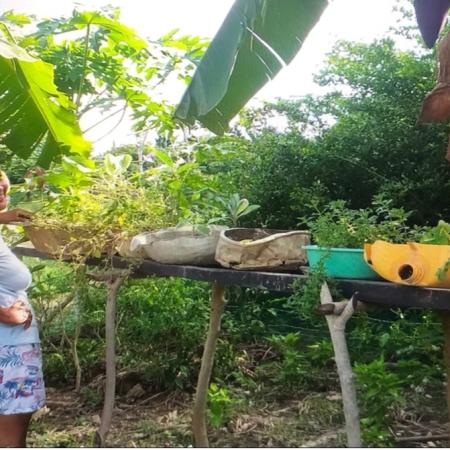
Luz Mary Ordoñez did not know what to expect when she learned about the Government of Colombia’s measures to deal with the COVID-19 crisis in a newscast. She was struck by the fear of uncertainty. This isn’t something new for Luz Mary. She has experienced this many times before. For many communities like Las Palmas, where Luz Mary lives, the future has been uncertain for years going from extreme flooding to profound water crisis as a result of extreme events.
One of the strategies promoted by the project is the implementation of biodiverse agroecosystems to mitigate climate change in this region. The biodiverse agroecosystem approach integrates varied and sustainable crop use and incorporates risk management in the face of adverse climatic events, aiming to guarantee food supply for families throughout the year. Today, agroecosystem approaches adapted to the changing climate are reducing the impacts of COVID-19 on the communities of La Mojana.
Thanks to the climate-resilient farming practices and enhanced production, they will have healthy and nutritious food for the coming months, along with extra emergency funds from surplus produce sold in local markets. These supports will also help protect these communities from the shocks of increasingly intense storms and floods. This way, when other crises hit, the families of La Mojana will not be forced to migrate or to lose their farms and their livelihoods.
“Through the project I have learned many things. One is how to take care of the agroecosystem. This has impacted my life, and thanks to this I have rediscovered my love for nature. Today we received the materials and supplies, and most of us did not know what to do during this quarantine, but now we are going to take advantage of the time since we are at home and working in the community agroecosystem to prepare for winter. This helps us a lot and keeps the family united. We will plant our vegetables and crops, in addition to using the water tank that we need so much during this drought, and we are deeply committed to going forward and getting through this.”
Full story: https://undp-climate.exposure.co/gcf-mojana

